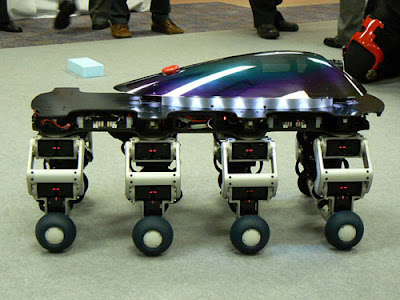First Life is a 2010 British nature documentary written and presented by David Attenborough, also known by the expanded titles David Attenborough's First Life (UK) and First Life with David Attenborough (USA).
It was first broadcast in the USA as a two-hour special on the Discovery Channel on 24 October 2010. In the United Kingdom it was broadcast as a two-part series on BBC Two on 5 November 2010.
First Life sees Attenborough tackle the subject of the origin of life on Earth. He investigates the evidence from the earliest fossils, which suggest that complex animals first appeared in the oceans around 500 million years ago, an event known as the Cambrian Explosion.
Trace fossils of multicellular organisms from an even earlier period, the Ediacaran biota, are also examined.
The naturalist travels to Canada, Morocco and Australia, using some of the latest fossil discoveries and their nearest equivalents amongst living species to reveal what life may have been like at that time. Visual effects and computer animation are used to reconstruct and animate the extinct life forms.
The series was directed by freelance film-maker Martin Williams and series produced by Anthony Geffen, CEO and Executive Producer of Atlantic Productions, with whom Attenborough is also working on a 3D documentary for the satellite broadcaster Sky.
It was produced in association with the BBC, the Discovery Channel and the Australian Broadcasting Corporation. During production, it had the working title The First Animals.
Attenborough's Journey, a documentary film profiling the presenter as he journeyed around the globe filming First Life, was shown on BBC Two on 24 October 2010. A hardback book to accompany the series, authored by Matt Kaplan with a foreword by Attenborough, was published in September 2010.
wikipedia
WARMLY RECOMMENDED!!
It was first broadcast in the USA as a two-hour special on the Discovery Channel on 24 October 2010. In the United Kingdom it was broadcast as a two-part series on BBC Two on 5 November 2010.
First Life sees Attenborough tackle the subject of the origin of life on Earth. He investigates the evidence from the earliest fossils, which suggest that complex animals first appeared in the oceans around 500 million years ago, an event known as the Cambrian Explosion.
Trace fossils of multicellular organisms from an even earlier period, the Ediacaran biota, are also examined.
The naturalist travels to Canada, Morocco and Australia, using some of the latest fossil discoveries and their nearest equivalents amongst living species to reveal what life may have been like at that time. Visual effects and computer animation are used to reconstruct and animate the extinct life forms.
The series was directed by freelance film-maker Martin Williams and series produced by Anthony Geffen, CEO and Executive Producer of Atlantic Productions, with whom Attenborough is also working on a 3D documentary for the satellite broadcaster Sky.
It was produced in association with the BBC, the Discovery Channel and the Australian Broadcasting Corporation. During production, it had the working title The First Animals.
Attenborough's Journey, a documentary film profiling the presenter as he journeyed around the globe filming First Life, was shown on BBC Two on 24 October 2010. A hardback book to accompany the series, authored by Matt Kaplan with a foreword by Attenborough, was published in September 2010.
wikipedia
WARMLY RECOMMENDED!!






